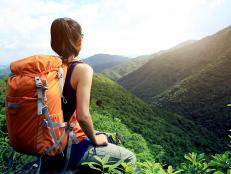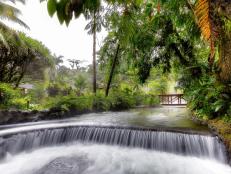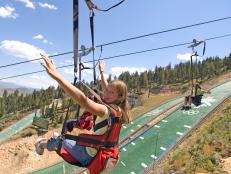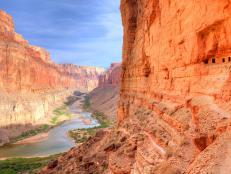Kayaking 101

As a former kayak instructor, I got a real charge out of sharing with new paddlers why I love taking these boats out on the water. Kayaks are the go-almost-anywhere sports cars of our rivers, lakes and oceans. They are also a great way to experience the water and landscape when traveling.

Michael Hanson / Aurora Photos
They can carry you through ice-filled fjords, over crystal-blue exotic waters, offer a thrilling whitewater ride and transport you down lazy rivers full of wildlife. With the right boat, you can carry plenty of gear and supplies along for multi-day adventures, too.
When first paddled primarily for hunting thousands of years ago, kayaks were covered in animal skins with a small opening in which the paddler entered then sat inside the boat. Sit-in kayaks still feature a cockpit, but comfort-focused sit-on-tops and kayaks with large, easy-to-enter cockpits and supportive seats have become popular options. I’ve also seen more purpose-built fishing kayaks on my local lakes and rivers.
Getting Started
You may have watched smiling kayakers cruise by at a local lake or wondered what it would be like paddling with your child directly over a pod of dolphins (it's awesome!). If that sounds like you, then here's how to get started.
Consider taking a paddling class at a local kayaking outfitter or from an outdoor school such as REI or the American Canoe Association. Instructors should teach the basics of boating safety, stroke technique, clothing for paddling and provide an opportunity to practice skills in a safe environment. Understanding and spotting potential hazards while on different types of water (moving, lake, and ocean) is key, but good instruction also will include ways to paddle efficiently so you can get the most enjoyment out of being in the boat.
As with paddle boarding, there are three main strokes you'll want to learn and then master: the forward, backward and sweep strokes. The forward stroke, as its name implies, is used to move the kayak forward through the water. Practice this stroke using the core muscles of your trunk rather than just your arms to be most efficient. The backward stroke is used to stop the kayak in the water and the sweep stroke is used to turn the boat while continuing to move the boat forward. Learn the slightly more advanced draw stroke to pull the kayak sideways, and then you've got a solid set of strokes to handle most situations.
In addition to the basics, your local outfitter could share knowledge and skills you'd need for more advanced paddling excursions, such as open-water trips.
Which Boat for Me?
As you may have seen on your local lake, kayaks come in many styles, shapes and materials. Your local kayak outfitter can help guide you to the right boat if you’re looking to buy. They’ll also give advice on the right paddle and PFD (personal flotation device). Be prepared to describe where you generally will paddle the kayak and how you'll use it (fishing, for example), your experience level, whether you’ll be taking along young children for the ride and even how you'll be storing and transporting the boat. Shorter and wider kayaks tend to be more stable and maneuverable. Long, narrow kayaks tend to move faster through the water.
Sit-on-top kayaks are good options for beginners who just want to jump on the water and take off. As the name implies, with this type of kayak, paddlers sit on rather than in, the boat. Your gear is easy to grab on a sit-on-top and if you fall off, no worries – you just climb back on. Sit-in kayaks, on the other hand, have decks that paddlers sit inside. These kayaks generally will allow you to paddle a greater variety of water types and of course offer a drier ride if you use a spray skirt to cover the cockpit opening.
If fishing’s your game, there are plenty of kayak options built extra wide for stability to help when reeling in your prize. They also include such features as rod holders and plenty of storage space.
Plastic is perhaps the most common construction material because it’s tough and relatively inexpensive, but wood, fiberglass and even carbon fiber and Kevlar are used to build boats. Each material has advantages and disadvantages (for example, while sturdy, plastic boats will be heavier than more exotic materials such as carbon fiber).
As you would with a car, it's best to give several kayaks a spin before you decide which to buy. If you're looking forward to spending most of your time on a lake or slow rivers, a sturdy, plastic "touring-style" boat with a comfortable seat and some storage for necessities like extra food and water likely will get you where you need to go.
Where to Paddle
If you’re new to kayaking – maybe you just finished your first lesson -- find a spot with calm water that’s fairly protected from wind to get some practice. Your local outfitter could have some suggestions on places to put-in near you.
Also, check a state park directory for destinations that include paddling opportunities. The National Forest Foundation put together this list of their best places.
And the next time you're planning a vacation near water, or staying at a resort with kayak rentals, consider giving kayaking a try. Resorts often offer sit-on-top kayaks for their guests to paddle for a small fee.
Once you feel the glide of the boat under you and the cool splash of the water, and get a new perspective on wildlife from the cockpit of your boat, I expect you'll become a kayaking evangelist like I am.









